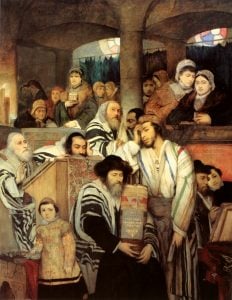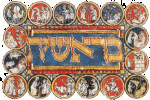From Superposition to Simchah: Sukkot and the Joy of Collapsed Doubt
“Ein simchah ke’hatarat ha-sfeikot”—there is no joy like the resolution of doubt. On the eve of Rosh HaShanah, our sages describe a cosmic pause: the
“Ein simchah ke’hatarat ha-sfeikot”—there is no joy like the resolution of doubt. On the eve of Rosh HaShanah, our sages describe a cosmic pause: the
By Alexander Poltorak לע”נ אבי מורי, אברהם שמשון ע”ה בן ראובן Between the jubilation of Rosh HaShanah and the solemnity of Yom Kippur lie ten

Yom Kippur means “The Day of Atonement.” Some view it as a frightening day full of regrets of the past and anxiety for the future.
Coming soon to a theater near you. Watch a trailer:

In the last post, Tishrei—Past, Present, and Future, we discussed how all Tishrei holidays – Rosh HaShanah, Yom Kippur, Sukkot, and Simchat Torah – are

The months of Tishrei is full of holidays, and they all share a common theme—the unification of time—past, present, and future. It all starts with

Sefer Yetzira speaks of three dimensions: Olam, Shanah, and Nefesh (Sefer Yetzirah, 6:4.) Olam means “world” and signifies space. Shanah means “year” and signifies the dimension of

This is what Haman did not understand. Even at the highest level, where there is a complete symmetry between Jacob and Esau, G‑d chooses Jacob—a

Ultimately, I suppose Einstein was right—G‑d does not play dice. So when Haman reached that spiritual level through casting the lots, he discovered the true
This post is a continuation and the conclusion of the previous post, THE FIFTH FORCE. Aside from the connection with the last week’s Torah portion,
When G‑d created the first humans, Adam and Eve (Chavah), He created them as one. And G‑d created man in His own image, in the

These are the journeys of the children of Israel… (Numbers 33:1) When G-d brought the Jews out from Egypt, He brought them out with the mystery of
The Shulchan Aruch – the Code of Jewish Law – states that 30 days before Pesach (Passover) one needs to start learning the laws of

Some people may be fooled by randomness but, when we realize that randomness opens the door to the Divine, we are saved by randomness. It

In the Torah portion Tazriah (Leviticus 13), the Schrödinger cat[1] gets leprosy. Well, it’s not really leprosy, it’s a mysterious supernatural disease called tzara’as, nowadays translated